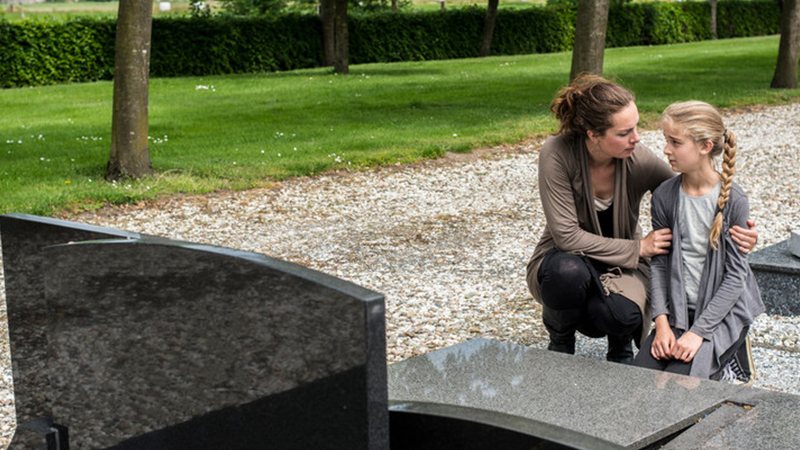Talking with a Child About Death

It can be hard for adults to watch a child deal with grief. We want the child to feel better, to return to “normal” as soon as possible. It helps if we can remember that when it comes to grieving, “normal” takes on a whole new meaning. Although every child and every loss is different, there are some basic guidelines for understanding and talking about death with a child.
Don’t get into comparisons. One death is not worse than or better than another. Even the death of a goldfish can be a huge loss for a child.
Be compassionate and allow the child to feel sad or angry.
Don’t be fooled by outward behavior. Children sometimes appear unaffected by loss, but in reality their grief will come out at some point. You can help it along by being available to a child in grief—to listen, to play, to cry, to pray.
Ask simple questions or make simple statements that help a child articulate his own feelings:
- “It sure is quiet around the house without Spot’s barking. I miss him.”
- “How are you feeling today? Do you want to go for a walk with me?”
- “This was Grandma’s favorite [song, season, food, sweater, etc.]. Remember when [recall a specific event here]?”
- “Would you like to keep this [book, doll, necklace, etc.] as a reminder of your sister?”
Let a child see your own grief. If you are grieving too, don’t be afraid to be sad together.
Say a favorite prayer together or make something up as you go along. You can use the reflection below, “Healing the Hurt,” as a guide.
Meditation: Healing the Hurt
Losing someone we love
is like losing a part of ourselves.
We feel an ache inside,
an emptiness that can’t be filled.
Dear God,
give us the wisdom and grace
to recognize that ache
in the children we love and serve.
Help us say the right words,
do the right thing, as we
guide them on the path toward
healing and wholeness.
—Excerpted from Parenting a Grieving Child: Helping Children Find Faith, Hope, and Healing after the Loss of a Loved One by Mary DeTurris Poust


